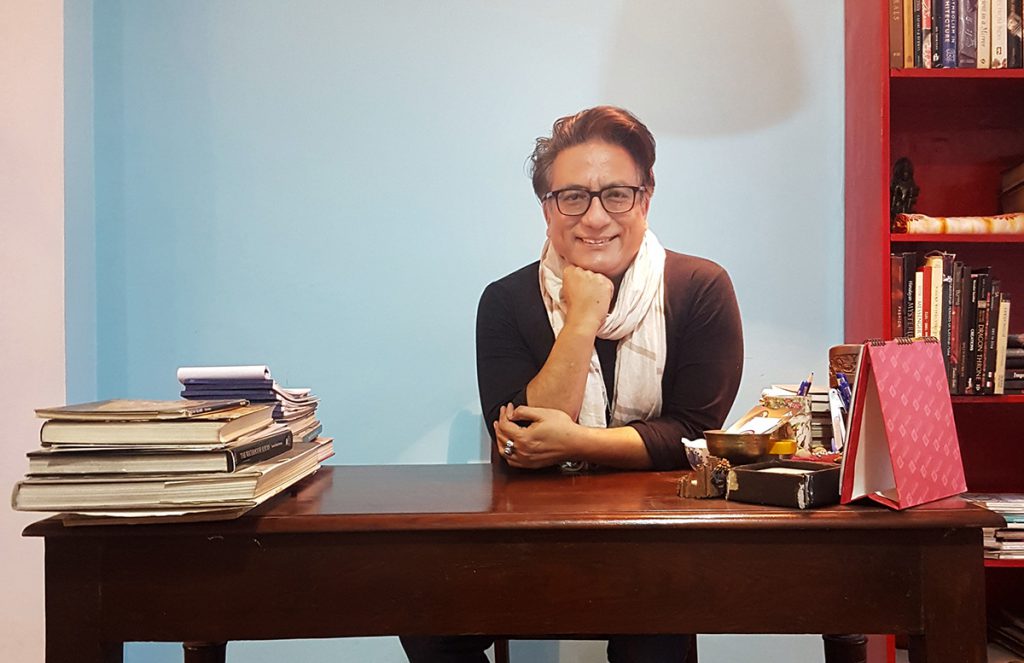
Eshu Funi defines Sonam Dubal’s way of seeing. That all-encompassing Japanese-Buddhist belief that a living being and its environment are non-dual, though seemingly distinct, informs all of Sonam’s repertoire of work - how he designs his clothes, the way he looks at the weaver and the woven and the threads that link him to the world outside. We must, he believes, respect our environment and the multiple cultures that spring off of it for in doing so; we only improve the quality of our lives.
When you speak to Sonam, it is difficult to separate him from his work. His passion for Sanskar, his signature brand of clothing, is so strong, it is almost as if he wants to deflect your attention away from him. But to understand Sanskar, which he established in 1999, or for that matter Tsutra, his collaboration line with the NGO Sasha, you need to understand Sonam, the person.
Born in Assam to a Sikkimese-Tibetan mother and a Maharashtrian father, Sonam was brought up a Buddhist, where he learnt about compassion and the futility of riding roughshod over nature. He also learnt about assimilation – that embracing a multiplicity of cultures, traditions and ideas would not only open up a whole new world for him but that it would also define who he was as an individual. Growing up in Northeast India with his mixed parentage, Sonam inherited what he calls a “natural sense of adjustment”, an “effortless ease” with which to blend with other cultures while celebrating the uniqueness of his own. It is this that makes Sonam a bridge between the past and the future, between his birth region and other parts of the world. And that is why Sanskar has a permanent presence in Paris and retails in special stores in India and across the world, including in New York, Vancouver, Belgium, Kuwait and Sri Lanka. His legion of admirers includes, among others, documentary filmmaker Leslie Cockburn, international actor Isabella Rossellini who wore his embroidered jackets for her latest Hollywood venture, “Shut Eye”, screenwriter Rania Hanano, film director Deepa Mehta, artist Mithu Sen, and Bollywood stars Sonam Kapoor, Tabu and Vidya Balan. Many of them speak of a sense of spirituality that pervades his designs, a quality he says he inherited from his mother, who he lost when he was just 12.
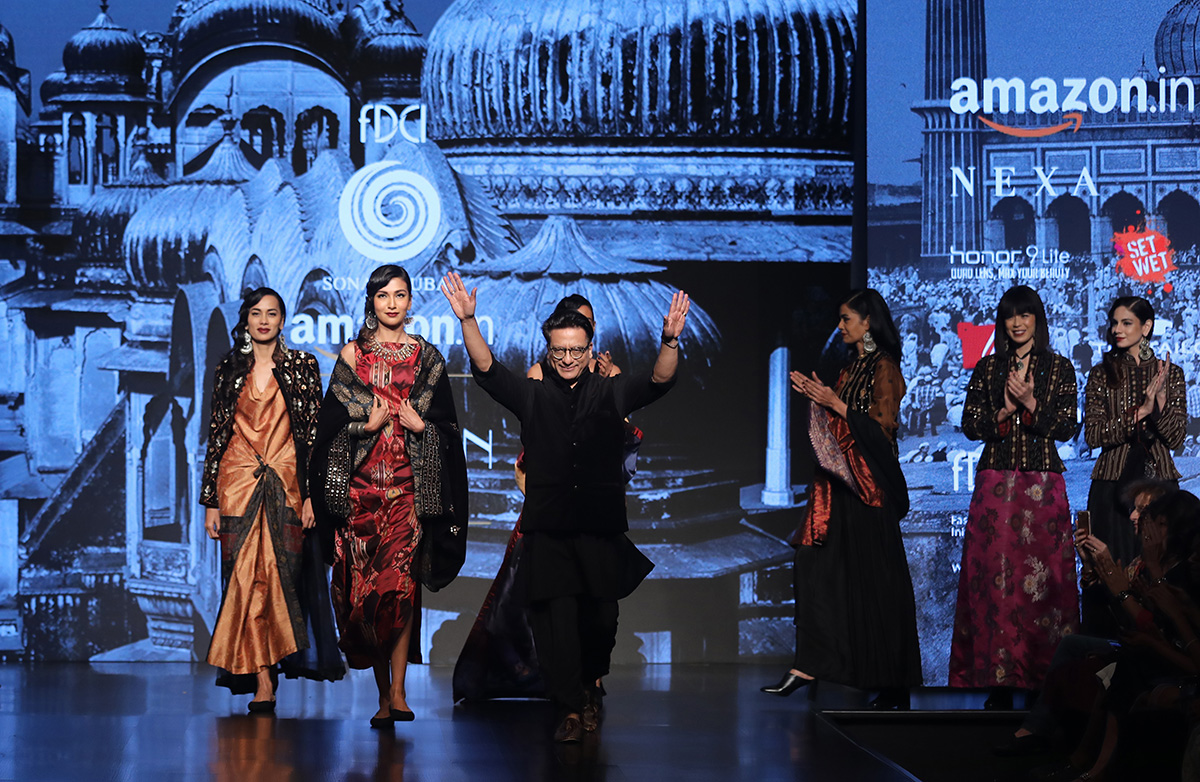
Living with his parents in the Northeast also opened Sonam’s eyes to the value of sustainable living and the uniqueness of the region’s textile culture. The concepts of regeneration and reincarnation that he imbued from his Tibetan-Buddhist background soon became the foundation of his work as he upcycled old silks to create vintage ensembles and combined indigenous weaving techniques with modern design to reach out to a wider global market. His choice of Eri Silk stemmed from this belief in sustainability, of regenerating locally produced textiles and using his design skills to give them a whole new meaning. [Eri silk is worn locally in the Northeast. It is also known as Ahimsa (non-violent) silk and is believed to be to world’s most sustainable fabric.] In 2003 at the Lakme Fashion Week, Sonam became the first designer to take the Northeast to mainstream Indian fashion, weaving Pali calligraphy onto Eri silk and using Benarasi silk and Chanderi to contemporise the Sikkimese Honju and Bakhu gown. Sonam’s individuality shone through in this vivid display of cultures. The collection was a huge success and before long orders for his designs came pouring in from the international market.
In this wide-ranging interview with NEStories, Sonam speaks passionately of how Northeast India could teach the rest of the country about sustainable living, why the region’s rich textile heritage must be nurtured and how the Northeast could be the gateway to the rest of Asia. He tells us of the impediments that the region’s craftspeople face and what should be done to take the Northeastern weaver out of their local market and into the national arena. “If we can wear the kimono we can also make the Mekhla Chadar or the Jainsem or the Puan or the iconic Naga or Manipuri shawls as a part of our everyday life,” he says.
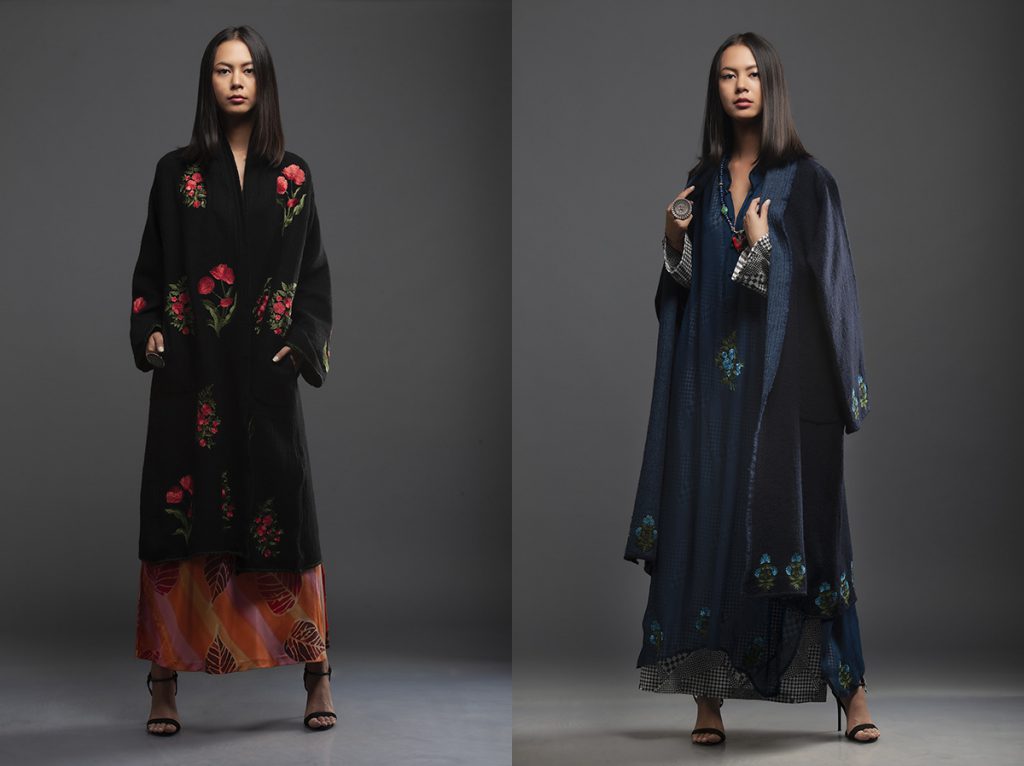
As a designer and a revivalist, what are the things that you would want to revive in North-eastern textiles and fabrics?
More than revive it would to be to reinstate and make textiles and the crafts from the Northeast more relevant and available to markets both domestic and international. Production earlier was mainly for local consumption and predominantly done by women with the loin loom. Research must be done around more contemporary weaves for global markets, looking to East Asia for inspiration. For example, the Japanese natural dying processes and ecological ways of weaving are very close to our skills and styles of craft and weaves.
The textiles and crafts of the Northeast are made with a deep understanding of the earth and are very sustainably produced. To preserve this culture, a link to the outside world is needed; so maybe a body of designers, artisans and weavers can work together to find ways to make them more relevant and integrate them to existing markets. It is also necessary that the weavers are protected so that they are not forced into unskilled labour.
What are the hurdles that come in the way for designers to incorporate the rich textiles of the region?
The textiles produced in this region earlier were for local consumption (the silks or shawls in Manipur or Nagaland or Mizoram and the Eri or Muga silks that are produced in Assam and Meghalaya and other local cotton textiles from Tripura and Arunachal Pradesh). These were produced for festivals, marriages and other ceremonies. The textile industry was self-sustaining at the beginning and had a way of finding its own markets. But with development and economic growth, there has been a move for weavers now to be more dependent on the mainstream economy. This has created complications for them in their ability to maintain their niche value and design sensibilities for the commercial markets.
A lot of the motifs and weaves are indigenous to the region and reworking motifs and design specifics is always tricky. One can change a few motifs but as the motif can be linked to a tribe, structure or nature one has to be very cautious. It is easier to work at a smaller scale or a niche market than with larger orders as that can be confusing for artisanal work.
The travel time taken on orders and the control of colours and design and production capacity can also be a hurdle that needs to be worked out. The fact that the region is prone to landslides and flooding during the monsoon and that can halt production and severely disturb manufacture.
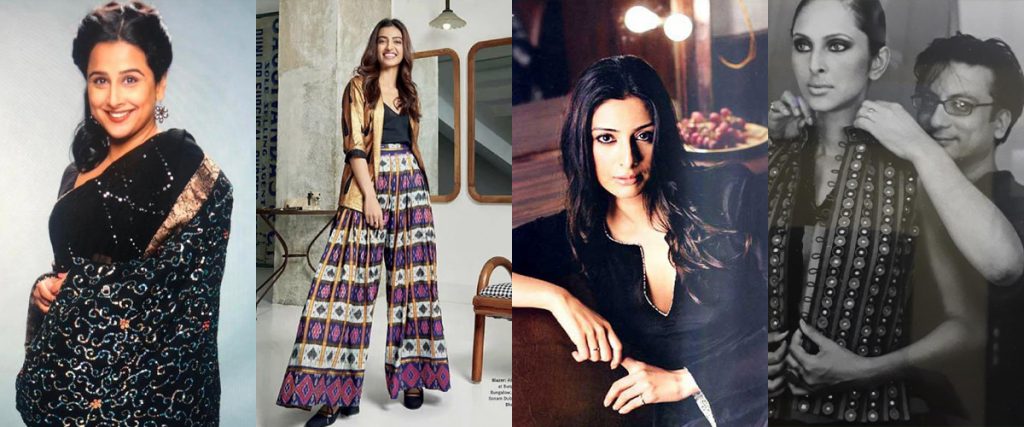
Given that the North-east occupies a unique place in the indigenous textile culture of India, how can designers leverage that wealth to showcase that in their work?
The challenge is to take the uniqueness yet incredible repertoire of this region and bring it to the forefront of the mainstream market. Designers must be sensitive to the entire process of weaving and provide inputs that bring the weave or craft alivein their products. This has started with some collaborative weaving clusters in the last years.I have started working on project MONASTREE, which is a guild of artists, designers, artisans, writers and photographers that help smaller organisations and artisans to find ways to reach out globally.
The Northeast is a bridge to understanding Asia through its culture. There is also a strong link that Northeast India has with Southeast Asia. We need government help to enable Northeast craftsfind their way to the Southeast Asian markets. Local designers too can play an important role in making that happen.
How do you think the people of the Northeast can celebrate their rich cultural heritage without necessarily being subsumed by the more popular or majority culture?
Growing up in a mixed parentage I learnt to own my own identity early in life and to stand up for my rights. My mother was Sikkimese -Tibetan and my father Maharashtrian. My mother was a pillar of strength and watching her I learnt to stand up for my own individuality. Assimilating both cultures became the foundation of my work when I joined the fashion world. I discovered a distinct language of design when I started my label SANSKAR in 1999.
For my first show at the Lakme India fashion week in 2003, I blended, through traditions of hand block printing, the ancient language of Pali calligraphy in Eri silk with recycled Benaras brocades and Chanderi recreating shapes and forms taken from traditional Bakhu, Chubha and Honju giving them a contemporary yet vintage slant. In that, I happen to be the first designer to bring the Northeast to mainstream Indian fashion.
This collection was hugely successful internationally. I had found a unique voice that celebrated the sensitivity and elegance of the culture where I had been nurtured.This collection was later shown at the trendsetting L’eclaireur store in Paris. With the years I went deeper into our textile history researching and finding historical textile linkages with Asia. I mixed cultural symbols, totems and languages to create embroideries and colours that I derived from the Silk Road. It was around that time that I earned the Elle Global award for my defining work.
Having grown up in the Northeast one does have a natural sense of adjustment that comes with effortless ease. We are all different by nature but in order to assimilate we need to be open to new experiences while celebrating our differences within a majority culture.
You have also shown how letting something as personal as faith can form the foundation of your work. How has Buddhist philosophy influenced your work as well as your own life?
Being brought up in a Buddhist culture I learnt to respect nature and have tried to live a life following a compassionate path. I was only 12 when my mother passed away but she left me an incredible spiritual inheritance to guide me through my life.
Embracing the past into the future became the mainstay and foundation of my work as I first dabbled with recycling and upcycling of leftover fabrics, recreating lines through old saris and silks, later adding Eri silk and furtherevolvingthe concept of regeneration and reincarnation. Sustainability became an inherent characteristic in my lines as the collections evolved and I started getting noticed for working in slow fashion. Buddhism not only helped me find my footing but also helped me in being mindful of my work as I clashed with changing times. In a world of fast fashion, I chose slow fashion with the belief and an intuitive sense of the future that we would have to go local to go global.
What holds you together?
Fashion is highly competitive. It is a network-based industry and can be very difficult and demanding. I think realising my priorities and authenticity were key to helpingme retain my self-esteem in the world of glamour and cut-throat competition.
I studied at the NIFT, Delhi and was in the second batch which graduated in 1990. I think education is very important in any career however, talented one is and gives you a sense of worth and helps you be grounded. Very early on in design school, I started realising how important it was to speak with an original voice and to speak with conviction on things that matter to you. I made my work speak as I moved from one platform to the another.
You have incorporated the heritage of Northeast in your work, for instance, MAJULI, an exquisite collection that captures the essence and ethos of the Assamese tapestry. What made this happen?
MAJULI was an exquisite collection that truly captured the essence of Assamese tapestry. I was approached by IMG Reliance Gautam Vazirani (Creative Strategist- Sustainable fashion) to represent Assam as part of the 13th edition of Lakme Fashion Week’s sustainable day in 2018. I jumped at the opportunity for though my background was Sikkim I was born in Assam and had my first years living in the tea garden Sephinjuri Tea Estate in Cachar district. Importantly, for the last 15 years, I had been working with Eri silk as well as Muga silk and other kinds of cotton from various parts of Assam. Tying this upto my story I created five ensembles that represented the Assamese ethos and had a contemporary visage as an installation as a background to the main show that had designers Jenjum Gadi (Arunachal Pradesh), Daniel Syiem (Meghalaya) Karma Sonam (Sikkim), Richana Khumanthem (Manipur), and Aratrik Dev Varman (Tripura) who worked on stunning textile collections for the runway.
Weavers across the region are crying for lack of support from the government. What must the state do to help?
Weaving as a craft is practised chiefly by women and needs support to thrive. The weaving community is also fragile because of the topography of the Northeast. They have to be protected. Weaving must be encouraged in households as a part of a living cultural history. In the education system too, not only in design institutes but even at schools, children must be taught weaving as a craft in the Northeast and other parts of India.
There is also a need for creating policies foreasy access toraw materials and markets.
The Northeast is very isolated and we need the government to find ways to link them to mainstream India, encouraging sustainable tourism, highlighting the weaves of the Northeast and helping development and overall growth for the region.
How can Northeast rewrite the story of its handloom and handicrafts for itto be in sync with market demands?
The crafts of the Northeast must be understood in the context of its environment and its shared history. Many factors influence the weaves and the crafts of the region, from its topography to its geographical location.The media can play a big part in giving this prominence.
The integration ofthe traditionalwith the contemporary world can only happen if there is more exposure and exchange between design specialists and craftspeople andartisans, giving space to the younger generations to participate.
Like the food from the North East has been hugely successful, so too we must slowly find ways to enter the market with our weaves and craftwork. Look at how Japanese culture has entered our lives today, from food to fashion to language. I feel if we can wear the Kimono we can also make the Mekhla Chadar or the Jainsem or thePuan or the iconic Naga or Manipuri shawls a part of our everyday life.
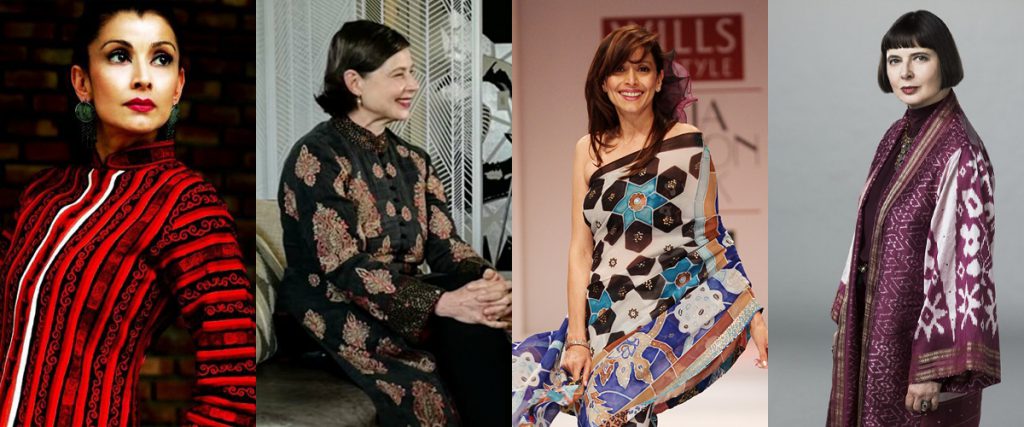
Who has been the biggest inspiration in your work?
My search for inspiration keeps changing with the times like liquid gold keeps redefining itself. Inspiration is fluid and can come from anywhere, from finding an odd bit of textile or a print or carving or a manuscript or sometimes fromlife itself. There have been many people too who have inspired my work through the years. Inspiration also sometimes come from travel and some other times from collecting old items like costumes, artefacts and costumes that assimilated historical linkages in their shapes and patterns. The colours of a piece of textile or stone would often times haunt me till it turned into some form of embroidery or print.
A deeper inspiration came from nature and how it is transposed into forms, textiles, weaves and crafts and a language that moved from colour to pattern. Growing up in the Northeast I was brought up with an openness to life and took to people and absorbed new cultures as I travelled beyond my comfort zone. Fashion to me has always been about cultural interpretation, a translation or even avehicle of change by telling stories through colour, print, weave and silhouette.
Over the years, creating textiles and style linkages between the Himalayan kingdoms and the rest of the subcontinenthave found resonance in my work.
You have had many high moments in your work life – like your recent work in styling actor Vidya Balan’s look in the newly-released Shakuntala Devi. What does this mean to you and what other moments stand out?
When Niharika Khan, the costume designer and stylist for the biopic, approached me and showed me old period shots of the 1950s as reference images for a particular look, I jumped at the opportunity.
I costumed only one segment which is a mirror work sari and a Poiret sequined cape that was used for the promotional pictures.Vidya Balan, an actress I’ve always admired, looked stunning in the outfit as Shakuntala Devi. At many levels, I have had the opportunity with Bollywood as many stars have endorsed my line at various platforms: like Radhika Apte, Sonam Kapoor, Konkona Sen, Tabu and Manisha Koirala. I have also worked on personal jackets and coats for director Shonali Bose and my wonderful friend and actor Adil Hussien. Malavika Tiwari has also been a muse through the years.
In 2016, fashion icon and actress Isabella Rossellini wore our signature coats and embroidered jackets from the Autumn-Winter 2016/17 line for two seasons of Shut Eye. Later that year one of the coats was also worn by actress Linda Emond in the Johnny Depp starrer Richard Says Goodbye. Films are great endorsements and I’m looking forward to working on more characters in world cinema.
How can people in the Northeast meld into the mainstream while retaining their own culture and ethnicity?
I think the people of the Northeast through their lifestyle, gentleness and easy demeanour are easily global citizens today. We don’t need to be accepted, we need, on the other hand through our own way, to teach the people the actual meaning of sustainable living, and how to live a life of harmony and peace. One has to learn to accept people for who they are. We are in a country which is diverse and so naturally very striated. Maintaining your individuality and authenticity is the way to retain your own culture and ethnicity while being absorbed into the mainstream.

